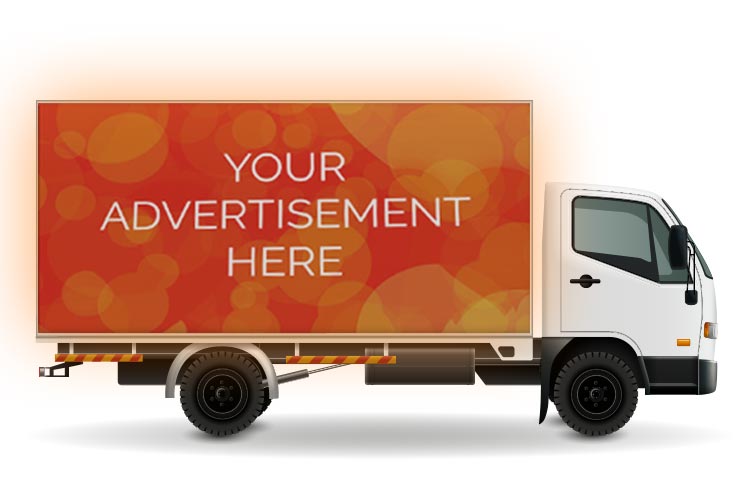Comparative Analysis: Mobile Digital Billboard Advertising vs. Traditional Advertising
The clash between traditional and modern advertising methods is particularly evident in the debate between mobile billboard advertising and conventional strategies. In this comparative analysis, we’ll delve into the benefits and drawbacks, shedding light on different scenarios of using these strategies.
The Traditional Advertising Landscape
Traditional methods, such as print and TV ads, have a long-standing history. Consumers often associate these formats with established and trustworthy brands. Usually, billboards and posters strategically placed in high-traffic areas can effectively target specific demographics based on location.
- Traditional methods are often associated with credibility, especially if featured in reputable publications or media outlets.
- Print materials offer a tangible representation of the brand, and physical advertisements can leave a lasting impression.
- Placing ads in specific locations or during particular times helps target desired demographics effectively.
Drawbacks of Traditional Advertising
In terms of the drawbacks, traditional advertising lacks the interactive and dynamic elements that modern consumers crave. It’s a one-way communication channel that may struggle to engage a tech-savvy audience. Once a traditional ad is up, it remains static. In a fast-paced world, the ability to update content in real time is a significant limitation.
- Traditional advertising is mostly a one-way communication channel, limiting interaction with the audience.
- Production and placement costs can be high, making traditional advertising less accessible for smaller businesses with limited budgets.
The Rise of Mobile Digital Billboard Advertising
Digital billboards offer the flexibility to display a variety of content. This dynamism can significantly enhance engagement by showcasing different messages at different times.
The ability to update content in real time allows advertisers to stay relevant, adapting to changing trends and consumer behaviors. Real-time adjustments result in a 27% increase in campaign effectiveness compared to static digital billboards.
Are there any drawbacks? Implementing digital billboards can be cost-prohibitive for smaller businesses. Moreover, prime mobile digital billboard spaces are limited and may not be accessible to all. Also, in areas saturated with digital screens, consumers may develop ad blindness, diminishing the impact of the message.
LED Trucks as the Dynamic Game-Changer
Mobility and Flexibility
LED trucks combine the benefits of mobility with the flexibility of digital content. They can navigate through various locations, ensuring exposure to diverse audiences. Studies report an average engagement rate of 1-3%, showcasing increased interactivity. They can be strategically deployed for targeted campaigns, reaching specific demographics in precise locations at optimal times.
Targeted Campaigns
LED trucks offer a level of targeting precision that traditional billboards struggle to achieve. Advertisers can strategically deploy these trucks in specific areas during peak times, ensuring maximum exposure to their target audience. Local businesses can benefit significantly from the localized impact of mobile billboard advertising, engaging with communities in a way that feels personal and immediate. LED trucks boast an impressive daily impression count, averaging between 30,000 to 70,000 impressions per day, depending on the route and location.
Event Integration
LED trucks can seamlessly integrate into events, turning them into dynamic, branded experiences. This is particularly advantageous for product launches, promotions, and local activations. Compared to fixed digital billboards, they also provide a cost-effective solution for businesses looking to boost their reach without long-term financial commitment.
Challenges
Weather Conditions
LED trucks’ effectiveness can be hindered by adverse weather conditions such as heavy rain or extreme temperatures.
Plan campaigns around local weather patterns. Consider seasonal variations and schedule campaigns during periods of favorable weather. Additionally, invest in weather-resistant LED screens and protective enclosures to mitigate weather-related challenges.
Regulatory Compliance
Different regions may have regulations regarding mobile billboard advertising. Navigating these legal frameworks can be complex. Conduct thorough research on local regulations before deploying LED trucks. Collaborate with legal experts to ensure compliance. Establish clear communication channels with local authorities and obtain any necessary permits well in advance.
Message Visibility and Timing
Ensuring that the message is visible to the target audience, especially in high-traffic areas, requires careful planning.
Conduct a thorough analysis of traffic patterns and peak hours in the target locations. Schedule LED truck campaigns during high-visibility times. Optimize content for quick comprehension, considering the limited time that audiences may have to engage with the message.
Saturation and Ad Fatigue
If LED trucks become a common sight in a particular area, audiences may develop ad fatigue, diminishing the impact of the message.
Design diverse and engaging content to keep the message fresh. Implement a rotating schedule of different campaigns to maintain audience interest. Use data analytics to understand audience responses and tailor content accordingly.
Competition with Surrounding Visual Noise
In busy urban environments, LED trucks might face competition with other visual stimuli, making it challenging to stand out.
Invest in high-resolution and high-brightness LED displays to ensure visibility in various lighting conditions. Design attention-grabbing content that stands out from the surrounding visual noise. Consider strategic placement in areas with less visual clutter.
While both traditional and digital advertising methods have their merits, the emergence of LED trucks brings a new dimension to the advertising landscape. Their dynamic nature, mobility, and cost-effectiveness make them a compelling choice for businesses aiming to break through the noise and engage with their audience in innovative ways. LED trucks stand out as a powerful tool for those who seek to drive their message forward with impact and creativity.














